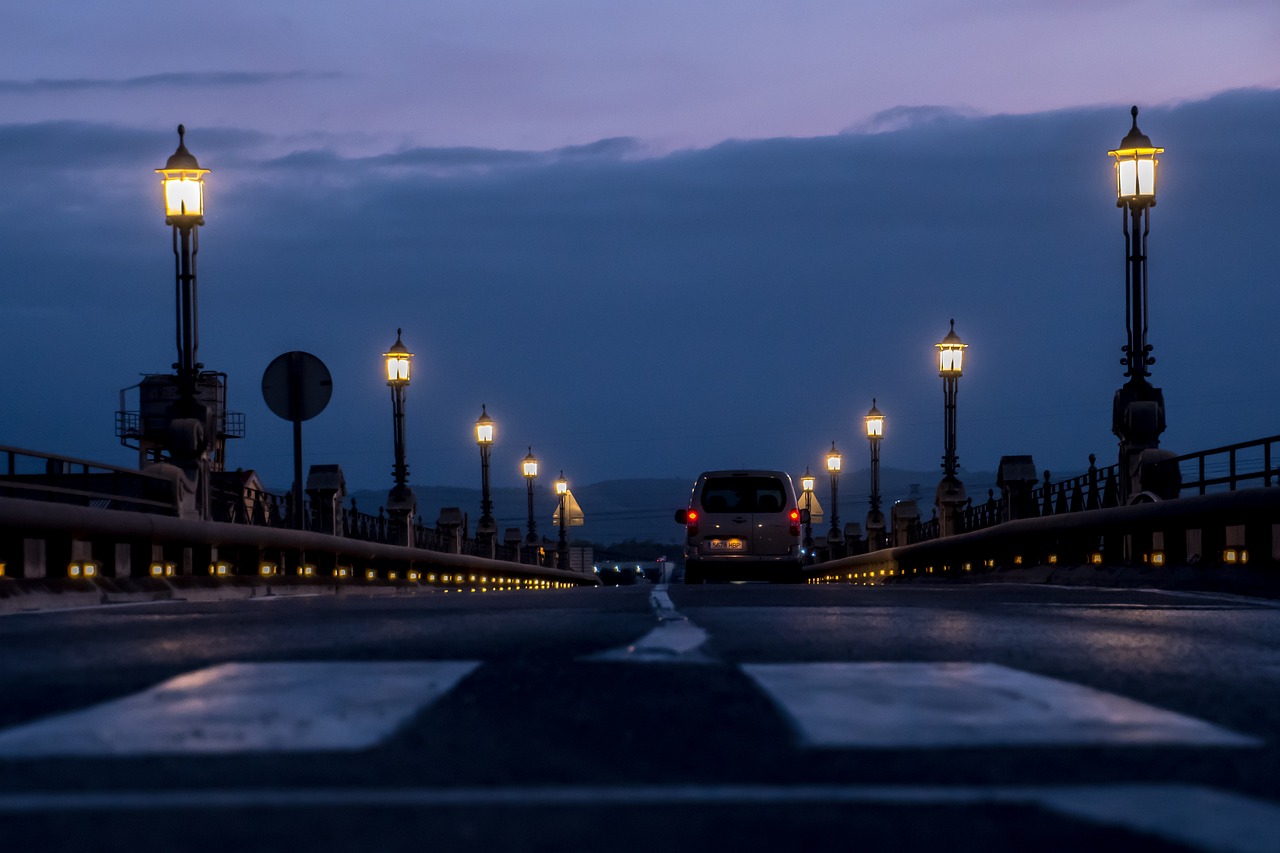Street lighting
The term street lighting (or street lights) refers to the provision of lighting to illuminate streets, roads, pavements, and other open areas, generally at night and in public places.
The earliest form of street lighting was the use of torches and lanterns made from materials such as wood, stone, and metal. These were carried by individuals or mounted on poles to provide light for streets, squares, and public spaces.
Street lighting was used in cities such as Rome and Athens, where oil lamps were placed along streets and in public squares to provide light for citizens. In medieval Europe, street lighting was provided by oil lamps and later, by candle lanterns that were hung from buildings or mounted on poles.
During the 18th and 19th centuries, technological advancements brought about significant changes in street lighting. In 1780, the Argand lamp was invented, which used a glass chimney to increase the efficiency of a flame and produce brighter light. This was followed by the invention of gas street lighting in the 1820s, which provided a more reliable and efficient source of light.
The advent of the electrical age in the late 19th century brought about the widespread use of electric street lighting. The first successful electric street lighting system was demonstrated in Paris in 1878, and soon after, cities all over the world began installing electric street lights.
Over the next few decades, advances in technology and design led to the development of various types of street lighting, including incandescent lamps, fluorescent lamps, and high-intensity discharge lamps. Today, LED street lights are increasingly being used due to their energy efficiency, long life, and low maintenance requirements.
Modern street lighting serves a variety of functions, from illuminating roadways and public spaces to improving safety and security. One of the most important modern uses of street lighting is to improve road safety by providing sufficient illumination for drivers and pedestrians. In addition, street lighting can be used to enhance the visual appeal of streets and public spaces, creating more attractive and welcoming environments.
There are several different types of modern street lighting, each with their own benefits and drawbacks. Some of the most common types of street lighting include:
- LED (Light Emitting Diode) street lighting is a modern, energy-efficient form of lighting that is becoming increasingly popular due to its long life and low maintenance requirements. LED lights also offer a high degree of control and can be programmed to provide a range of light levels and colours.
- High-Intensity Discharge (HID) street lighting uses high-intensity gas discharge to produce light, and is commonly used in large-scale outdoor lighting applications, such as sports stadiums and car parks. HID street lighting provides a bright, white light that is ideal for illuminating large areas, but it can also produce significant light pollution.
- Incandescent street lighting uses a filament to produce light, and was once the most common type of street lighting. Although incandescent lighting is still used in some areas, it has largely been replaced by more efficient forms of lighting, such as LED and HID.
- Fluorescent street lighting uses a tube filled with gas to produce light, and is often used in commercial and industrial settings. Fluorescent lighting provides a bright, white light that is efficient and long-lasting, but it can also produce significant light pollution.
[edit] Related articles on Designing Buildings
Featured articles and news
RTPI leader to become new CIOB Chief Executive Officer
Dr Victoria Hills MRTPI, FICE to take over after Caroline Gumble’s departure.
Social and affordable housing, a long term plan for delivery
The “Delivering a Decade of Renewal for Social and Affordable Housing” strategy sets out future path.
A change to adoptive architecture
Effects of global weather warming on architectural detailing, material choice and human interaction.
The proposed publicly owned and backed subsidiary of Homes England, to facilitate new homes.
How big is the problem and what can we do to mitigate the effects?
Overheating guidance and tools for building designers
A number of cool guides to help with the heat.
The UK's Modern Industrial Strategy: A 10 year plan
Previous consultation criticism, current key elements and general support with some persisting reservations.
Building Safety Regulator reforms
New roles, new staff and a new fast track service pave the way for a single construction regulator.
Architectural Technologist CPDs and Communications
CIAT CPD… and how you can do it!
Cooling centres and cool spaces
Managing extreme heat in cities by directing the public to places for heat stress relief and water sources.
Winter gardens: A brief history and warm variations
Extending the season with glass in different forms and terms.
Restoring Great Yarmouth's Winter Gardens
Transforming one of the least sustainable constructions imaginable.
Construction Skills Mission Board launch sector drive
Newly formed government and industry collaboration set strategy for recruiting an additional 100,000 construction workers a year.
New Architects Code comes into effect in September 2025
ARB Architects Code of Conduct and Practice available with ongoing consultation regarding guidance.
Welsh Skills Body (Medr) launches ambitious plan
The new skills body brings together funding and regulation of tertiary education and research for the devolved nation.
Paul Gandy FCIOB announced as next CIOB President
Former Tilbury Douglas CEO takes helm.
UK Infrastructure: A 10 Year Strategy. In brief with reactions
With the National Infrastructure and Service Transformation Authority (NISTA).























